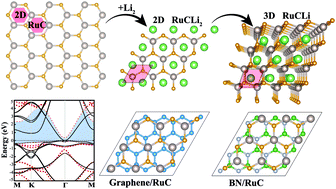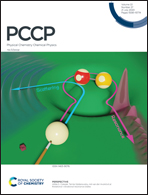Two dimensional ruthenium carbide: structural and electronic features
Abstract
The design and realization of novel 2D materials and their functionalities have been a focus of research inspired by the successful synthesis of graphene and many other 2D materials. In this study, in view of first principles calculations, we predict a novel 2D material ruthenium carbide (RuC) in graphene-like honeycomb hexagonal lattice with planar geometry. Phonon dispersion spectra display a dynamically stable structure. Comprehensive molecular dynamics calculations confirm the stability of the structure up to high temperatures as ≈1000 K. The system is a narrow gap semiconductor with a band gap of 53 meV (345 meV) due to GGA-PBE (HSE) calculations. Band gap exhibits significant changes by applied strain. Elastic and optical properties of the system are examined in monolayer form. RuC/RuC bilayer, RuC/graphene and RuC/h-BN heterostructures are also investigated. By calculating the phonon dispersion it is verified that RuC bilayer is the most stable in AA type-stacking configuration where Ru and C atoms of both layers have identical lateral coordinates. The effects of atomic substitutions on electronic band structures, acting as p-type and n-type doping, are revealed. A novel 3D RuCLi structure is also predicted to be stable and the isolation of its monolayer forms are discussed. Ruthenium carbide, as a 2D material which is dynamically and thermally stable, holds promise for applications in nanoelectronics.



 Please wait while we load your content...
Please wait while we load your content...